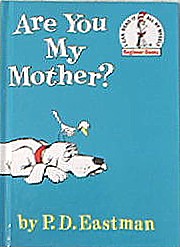
By Cambria Evans
(Houghton Mifflin, 2008)
Oh, to be nothing but skin and bones. Literally. Meet Finnigin, a nomadic skeleton who longs to put some meat on his bones. He roams the countryside, strapping his eating stool to his back, fastening an eating spoon to his cloak and longing for tasty bits to satisfy his “gigantic eating mouth.” There must be a feast somewhere.
He encounters a witch on Halloween and asks for directions to the nearest feast. The witch speeds away on her broom to warn the local monster, zombies and the mummy. Ghouls, after all, aren’t known for sharing. They all tell Finnigin to scoot and scram when he comes a-knocking. Undeterred, the skeleton boils a cauldron of water in the center of town, adding a raggedy old “magic” bone to whip up that delicacy everyone loves: bone soup. The townsfolk are intrigued and gather round. Ghouls, after all, are known to be gullible.
This is a simple tale, a passable read for Halloween. It will most likely entertain preschoolers and students up to grade one. Older readers, however, need to be spooked more and will want a more involved story line. The witch, the mummy and the zombies are indistinguishable and this will surely disappoint those who are more invested in creepy characters of Halloween lore. Still, for the younger ones, it’s a tame tale with appropriately simple, dark illustrations created with pen, watercolor and digital color.
Don’t be surprised if your reader proposes that everyone add toenail clippings to their bowls of chicken noodle soup. Mmm, mmm good.






 Written by Janet Reed Ahearn
Written by Janet Reed Ahearn
